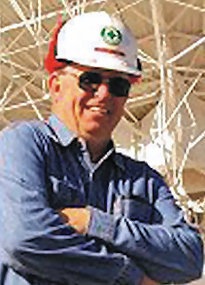
Jon Spargo, New Mexico Tech Astronomy Club
Venus still dominates the early morning sky and reaches its greatest elongation, or distance from the Sun on the 23rd. We will get to enjoy Venus in the early morning hours until well into next year!
The early evening and late-night skies are still dominated by Jupiter in the east and Saturn high in the south. After enjoying Venus in the early morning hours, turn around and look west to catch Jupiter well above the western horizon. Jupiter reaches opposition from the Sun on the 3rd, rising at sunset and being visible all night long.
This month we are also treated to three minor meteor showers. The northern and southern Taurids and the Leonids. Of the three, the best bet for some action will be with the Leonids which will peak on the night of November 17-18 and should produce around 15 meteors per hour. Bundle up, set up your lounge chair, look to the east and find the constellation of Leo the Lion. Leo’s head is defined by a curve resembling a sickle. Find the sickle and you’ll have the radiant point of the shower. While not as prolific as other showers, the Leonids are known for very fast meteors.
The Moon will be last quarter on the 5th, new on the 13th, first quarter on the 20th, and full on the 27th. Looking east-southeast on the morning of the 9th, about an hour before sunrise, the waning crescent Moon will be just below and to the right of Venus with only about ½ degree separating them. Looking high to the south on the 20th, the first quarter Moon keeps company with Saturn at about 5 degrees, or about half the width of your fist at arm’s length; separating them. Looking east on the 24th & 25th, about an hour after sunset, the waxing gibbous Moon will bracket the bright planet Jupiter.
On Sunday, November 5th at 2 a.m., daylight savings time ends for most of us in North America. Don’t forget to set your clocks and watches back one hour an enjoy the extra hour of sleep!
The first Saturday Star Party for November will be on Saturday the 4th at the Etscorn Campus Observatory. Numerous telescopes will be available for guests to view celestial objects. To reach the observatory take Canyon drive past the golf course to the 4-way stop. Turn right onto Buck Wolf Drive and drive down through the dip. At the top of the dip bare left and follow the signs to observatory parking.
Clear Skies!

















